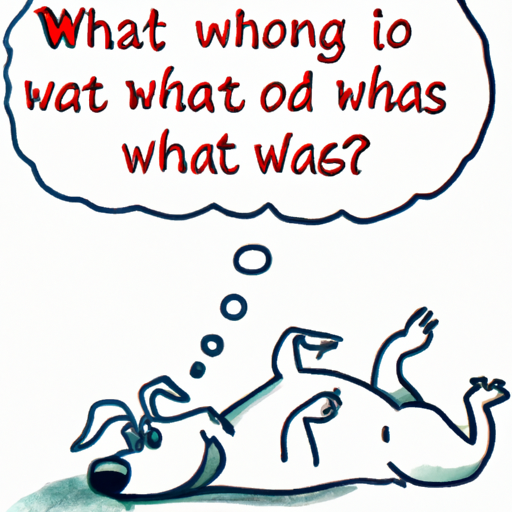Whether you’re a proud pet parent or just a casual canine enthusiast, you’ve probably noticed one thing: dogs seem to love belly rubs. Some dogs even go so far as to flop onto their backs at the sight of an outstretched hand, tail wagging in anticipation of the blissful belly scratches to come. But why exactly do dogs love belly rubs so much?
To answer this question, we need to delve into the world of canine behavior and physiology, exploring topics such as dominance and submission, endorphin release, and social bonding. So, let’s get started.
Table of Contents
- Dominance and Submission
- Endorphin Release
- Bonding and Affection
- Trust and Vulnerability
- FAQ
Key Takeaways
- Dogs expose their bellies as a sign of submission and trust.
- Belly rubs stimulate the release of endorphins, providing a sense of pleasure and relaxation.
- The act of belly rubbing fosters social bonding between dogs and their human companions.
- Belly rubs are not universally enjoyed by all dogs, and some may find the action uncomfortable or threatening.
Dominance and Submission
In the wild, wolves and other canines will often expose their bellies to a more dominant member of the pack as a sign of submission and respect. This behavior has carried over to domestic dogs, who often use the same gesture to signal their trust and submission to their human companions.
However, it’s important to note that not all dogs enjoy belly rubs. If a dog seems uncomfortable or tries to move away, it’s best to respect their boundaries. Some dogs may interpret the action as a sign of dominance, which can lead to fear or aggression. For more insights into understanding your dog’s behavior, check out this detailed guide on dog body language.
Endorphin Release
When you give your dog a belly rub, you’re not just scratching an itch. You’re also stimulating the release of endorphins, chemicals in the brain that act as natural painkillers and mood elevators. This is why many dogs seem to enter a state of bliss during a good belly rub, their eyes glazing over in pure pleasure.
Bonding and Affection
The act of belly rubbing isn’t just about dominance and pleasure. It’s also a powerful bonding tool. By taking the time to give your dog a belly rub, you’re demonstrating your affection and care. This can help to strengthen the bond between you and your furry friend, fostering a deeper sense of trust and companionship.
For more tips on bonding with your pet, consider reading this article on how to form a closer bond with your dog.
Trust and Vulnerability
Finally, it’s important to remember that a dog’s belly is one of its most vulnerable areas. By lying on their back and exposing their belly, your dog is showing a high level of trust in you. They’re essentially saying, “I trust you not to hurt me.” This is a big deal in the dog world, and it’s something that should be respected and cherished.
If you want to know more about your dog’s behavior, this article about why dogs do certain things could be helpful.
Frequently Asked Questions
1. Why does my dog expose his belly but doesn’t like belly rubs?
Not all dogs like belly rubs, even if they expose their bellies. It could be a sign of submission, not an invitation for a belly rub. Always respect your dog’s comfort and boundaries.
2. Can belly rubs be harmful to my dog?
As long as your dog is comfortable and enjoys the belly rub, it’s perfectly safe. However, be careful not to apply too much pressure or rub too vigorously, as the belly is a sensitive area.
3. How can I tell if my dog likes belly rubs?
Most dogs will show clear signs of enjoyment, such as closing their eyes, wagging their tail, or making relaxed, contented noises. If your dog seems tense or tries to move away, it’s best to stop.
In conclusion, belly rubs are more than just a fun way to spoil your pup. They’re a key part of canine communication, offering important insights into your dog’s behavior and emotions. So the next time your dog flops onto their back, remember: you’re not just scratching an itch. You’re speaking your dog’s language.
For more interesting dog-related articles, check out One Top Dog.



